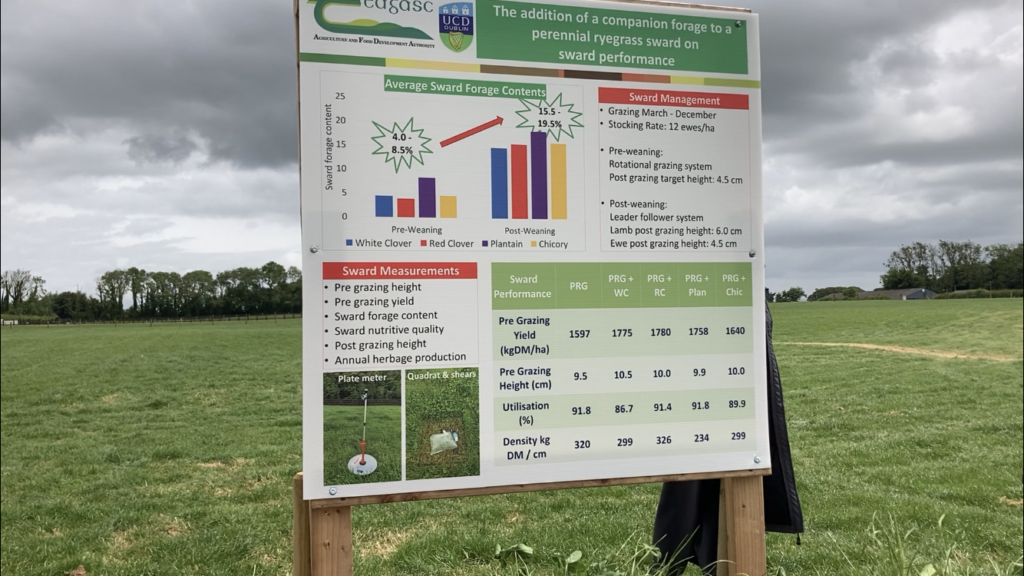A “significant increase” in lamb performance was seen in the post-weaning period when perennial ryegrass swards were grazed alongside a companion forage.
Furthermore, days to slaughter were reduced as a result of the increased performance.
This was what farmers were told at the Teagsc sheep open day on Saturday (June 18).
Speaking to Agriland about the study of the addition of a companion forage to a perennial ryegrass sward on ewe and lamb performance, PhD Walsh Scholar Lisa McGrane said: “There’s been a four-year animal study conducted on this comparing grass-only; grass and white clover; grass and red clover; grass and chicory; and lastly grass and plantain swards.
“The studies have shown that when including a companion forage with perennial grass, you’re getting increased lamb performance, particularly in the post-weaning period.”
The addition of a companion forage in comparison to a grass-only sward saw:
- An increase in the lifetime average daily gain of lambs by 17-31/g/day;
- Reduced days to slaughter of between 16 and 28 days;
- A reduction in concentrates fed of 6-11kg/lamb.
“Not as much of an increase pre-weaning was seen due to mainly growth pattern of clover and the herbs,” McGrane added.


“Firstly, clover and herbs have quite a seasonal growth pattern and are quite sensitive to temperature, so they grow better when there is more heat,” she continued.
“So you will have lower levels of clover and herbs in the sward at springtime so that’s why you aren’t seen as much of an improved performance during that time.
“Whereas, post-weaning, as temperatures rise as the season progresses, you are seeing greater levels of clover and herbs in the sward and thus a greater increase in lamb performance.
“As you can see there [on the board], you’ll have anywhere from 4-8.5% forages in a sward pre-weaning, compared to 15.5% to 19.5% in the post-weaning period.
“That’s when your clover and herbs are growing and that’s when you will see performance benefits [in the post-weaning period].”

Lisa added that ewe performance was similar when grazing swards including a companion forage compared to a perennial ryegrass-only sward.
